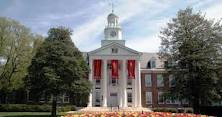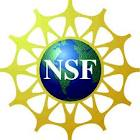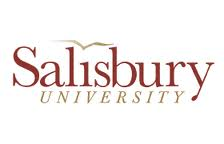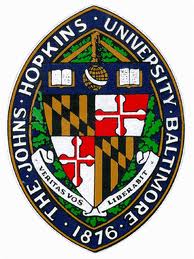 Research
ExperienceS for Undergraduates
Research
ExperienceS for Undergraduates
REU SITE:
Exercise - Explore Emerging Computing in Science and Engineering
Sample Research Projects:
The research project background materials and problem
sets will be posted in the spring pre-program online workshop. The
research projects will be finalized in the first week of the summer REU
program. The research projects will be designed to allow
undergraduate
student participants to be at the forefront of new innovations, yet work
within an environment that is manageable for their level of expertise.
Some sample research projects are listed as follows.
Graph mining for large-scale networks using MapReduce
Faculty Mentor: Dr. Enyue (Annie) Lu
Analyzing patterns in large-scale graphs, such as social and cyber
networks (e.g. Facebook, Linkedin, Twitter), with millions, even
billions of edges has many important applications such as community
detection, blog analysis, intrusion and spamming detections, and many
more. Currently, it is impossible to process information in real-world
large-scale networks with millions even billions of objects with a
single processor. To overcome single processor limitations, a cluster of
computers with multiple processing elements operated in parallel
connected by a distributed network are used to solve large-size problems
and reduce processing time.
In this project, students will try to enumerate and identify important
graph patterns. The network is modeled as a graph. Each person is
represented as a vertex and a mutual friendship between people is
represented as an edge in the graph. Finding a pattern in a real-world
network is equivalent to finding a subgraph in a large-scale graph. We
will map graph decomposing operations into a series of MapReduce
processes. The proposed MapReduce algorithms will be implemented in
Amazon Elastic MapReduce. We will also do performance comparison and
analysis for the proposed MapReduce algorithms and simulation results.
Implementation of parallel iterative improvement stable matching
algorithms
Faculty Mentor: Dr. Enyue (Annie) Lu
In a graph, a set of independent edges (no two edges in the set are
adjacent) is called matching. Matching algorithms are widely used in
many applications including database search, image processing, pattern
analysis, and scheduling. The stable matching problem was first
introduced by Gale and Shapley in 1962. Given n men, n women, and 2n
ranking lists in which each person ranks all members of the opposite sex
in the order of preference, a stable matching is a set of n pairs of man
and woman with each man and woman in exactly one pair, where there is no
pair who are not matched who both prefer the other to their current
partner. Gale and Shapley showed that every instance of the stable
matching problem admits at least one stable matching, which can be
computed in O(n2) iterations. For real-time applications such as switch
scheduling, the algorithm proposed by Gale and Shapley is not fast
enough.
To date, the most well-known parallel algorithms for the stable matching
problem are all run on theoretical parallel computing models such as
CRCW PRAM. In this project, students will implement a parallel iterative
improvement (PII) stable matching algorithm with linear time average
performance. For real-time applications with a hard time-constraint, the
PII algorithm can terminate at any time during its execution, and the
matching with the minimum number of unstable matching pairs can be used
as an approximation to a stable matching. The PII algorithm will be
implemented using MPICH2 from Argonne National Lab, NVIDIA CUDA-enabled
GPUs, and MapReduce computing on Amazon EC2. The goal of the project is
to examine the parallelism of the stable matching by using the practical
PII algorithm. We will implement the PII algorithm on the software
level, measure its speedup against the sequential approaches, find out
its efficiency and applicability, and investigate the parallelism limits
of the stable matching algorithms.
Anomaly Detection for Network Data Using
MapReduce
Faculty Mentor: Dr. Enyue (Annie) Lu
As the
volume of collected data grows at an unprecedented rate with the recent
technology advances, information retrievals on very large data sets have
becoming a beneficial and challenging task. Anomaly detection, which is
used to identify abnormal events or patterns that do not conform to
expected events or patterns, has been a very useful methodology to
perform predictive modeling checking of available data and become
increasingly complex to detect intrusion through network records due to
large volumes of network traffic data.
In this project, we will
develop a new framework that combines graph modeling with MapReduce
computing techniques to tackle anomaly detection on network record data
at extreme scales. Graph is an expressive data structure and has been
widely used to model complex data in many applications. By graph
modeling, data will be represented as vertices and the relationship
(e.g., similarity in spatial, temporal, or semantic attributes) within
data are represented as edges in a graph. We will detect the anomalies
by analyzing the graph generated by the network data. We plan to tackle
the problem in the following three research steps. In the first step, we
analyze the characteristics of the data and develop an effective graph
model for the data. In the second step, we will develop efficient
MapReduce graph-based anomaly detection algorithms and analyze their
performance. In the last step, we will test the proposed algorithms and
verify their performance using real-world network data.
Graph Clustering with Applications on Covid-19 Growth Data
Faculty Mentors: Dr. Enyue (Annie) Lu
Coronavirus
Disease 2019 (Covid-19) has affected all people across the world.
According to the Center for Disease Control (CDC), more than 600,000
lives have been lost due to Covid-19 across the U.S.. Much of this has
been attributed to a lack of preparedness and a lack of resources.
Different counties across the U.S. have had varying rates of Covid-19
case growth due to area density, strictness of guidelines, deployment of
Covid-19 vaccines, or other factors. The ability to analyze Covid-19
growth data across counties in the US and find similarities and possible
relations between them could help predict future trends in the nation,
so that resources can be allocated in a way that would allow the spread,
number of cases, and mortality rate of the virus to decrease
substantially in all counties.
Graph is an
expressive data structure and has been widely used to model complex data
in many applications. Data-driven graph construction and graph learning
methods have been proven to be an effective way of designing general
machine learning algorithms and have achieved promising research
results. In this project, we plan to leverage our prior work on graph
mining MapReduce cloud computing algorithms for large-scale graph to
develop graph clustering machine learning algorithms with applications
in public health. The REU students will investigate graph clustering
techniques for Covid-19 data and apply graph clustering machine learning
algorithms to identify centers and dimeters of the Covid-19 case
clusters. We will test the accuracy of our algorithms on a testbed that
has been be created based on our preliminary work on network data using
Apache Spark. We will also test the scalability of our algorithms in
Amazon Elastic MapReduce, Google Colab, and XSEDE infrastructure.
Image Processing and Computer Vision Algorithms for Sustainable Shellfish Farming
Faculty Mentors: Drs. Enyue (Annie) Lu, Yuanwei Jin, Lei Zhang
Aquaculture
of shellfish such as oysters, mussels, and scallops provides a
sustainable, environmentally beneficial source of high-protein food, as
well a way to grow the economy in rural coastal areas. As the demand for
seafood continues to surpass the supply of wild-caught fish and
shellfish, sustainable aquaculture is becoming recognized as a solution
for feeding a future global population of nine billion. Current
practices and technologies used in shellfish farming lack the
advancement found in today’s digital, automated world. Transforming
traditional shellfish farming to sustainable smart farming demands new
technologies, such as sensing and imaging, machine learning, artificial
intelligence, high performance computing, computer vision, and robotics
in the seeding, dredging, and harvesting processes.
In this
project, we propose to develop innovative image processing and computer
vision algorithms by applying machine learning and high performance
computing. By leveraging our current funded USDA research, this project
will enable undergraduate students to develop algorithms based upon our
previous REU work on imaging processing algorithms using deep neural
networks. Students will dive into two sources of authentic data – data
collected in water tanks in the SPIS-Lab at UMES and the data collected
by underwater drones at Pacific Shellfish Institute to decipher what
happens in the video frames in order to detect oysters and recognize the
activities (active versus resting) of each individual oyster. Students
will further design effective algorithms to monitor the oysters’ amount
of interaction, length of interaction, growth, and its overall
adaptivity to its surroundings, and develop a smart shellfish farming
software system for crop inventory monitoring and identification of
behaviors of oysters and their relationship with their habitat remotely.
Finally, students will test the algorithms over commodity off-the-shelf
GPU clusters for HPC implementation.
GPU accelerated medical image reconstruction and processing
Faculty Mentors: Dr. Yuanwei Jin and Dr. Enyue (Annie) Lu
Image reconstruction and processing is a rapidly developing field based
both on engineering, mathematics, and computer science. Algebraic
Reconstruction Technique (ART) is a well known reconstruction method for
computed tomography (CT) scanners. Although the ART method has many
advantages over the popular filtered back-projection approaches, due to
its high complexity, it is rarely applied in most of today’s medical CT
systems. The typical medical environment requires fast reconstructions
in order to save valuable time. Industrial solutions address the
performance challenge using dedicated special-purpose reconstruction
platforms with digital signal processors (DSPs) and field programmable
gate arrays (FPGAs). The most apparent downside of such solutions is the
loss of flexibility and their time-consuming implementation, which can
lead to long innovation cycles. In contrast, research has already shown
that current GPUs offer massively parallel processing capability that
can handle the computational complexity of two-dimensional or
three-dimensional cone beam reconstruction.
In this project, students will accelerate a new iterative image reconstruction algorithm called “propagation and backpropagation (PBP)” image reconstruction method using Matlab computing with NVIDIA CUDA-enabled GPUs. Through the project, students will learn the basics of Matlab parallel computing for medical imaging with GPU support and gain understanding of the benefits of parallel processing for large scientific computing tasks based on a real-world medical imaging problem. Furthermore, students will be able to verify their algorithms using experimentally collected data through data measurement systems funded by a Department of Defense (DOD) award and an NSF Major Research Instrumentation (MRI) award.
Deep Learning and Data Analytics for Remote Sensing Applications
Faculty Mentor: Dr. Yuanwei Jin
With massive amounts of computational power, machines can now recognize objects and translate speech in real time. Research in this area attempts to make better representations and create models to learn these representations from large-scale unlabeled data. Deep learning is part of a broader family of machine learning methods based on learning representations of data. Deep learning algorithms attempt to learn multi-level representations of data, embodying a hierarchy of factors that may explain them. Various deep learning architectures such as deep neural networks, convolutional deep neural networks, and deep belief networks have been applied to fields like computer vision, automatic speech recognition, and natural language processing where they have been demonstrated to be effective at uncovering underlying structure in data and producing state-of-the-art results on various tasks.
In this project, we will focus on remote sensing applications such as radar target recognition and feature extraction of acoustic dispersion characteristics. For example, automatic target recognition based upon a sequence of synthetic aperture radar (SAR) images is an important task for both military and civilian applications. By employing emerging deep learning method applicable to SAR images and implementing the algorithms on commercial off-the-shelf graphics processing units (GPUs), significant improvement in recognition performance is expected.
Flood detection by Deep Learning with Uninhabited Aerial Vehicle Radar
Imagery
Faculty Mentors: Yuanwei Jin and Enyue Lu
Floods are the most frequent, disastrous, and widespread natural
hazards. Research shows that floods account for more than 70% of hazard
events occurring globally between 1994 and 2013. One of the leading
causes of flooding in the US is hurricane.
As climate change intensifies, the frequency and severity of floods is
expected to increase, posing significant challenges for societies
worldwide.
One modern approach to minimize the risk associated with massive
inundation is building radar technology, for example, NASA’s
Uninhabited
Aerial
Vehicle
Synthetic
Aperture
Radar
(UAVSAR) to automate
flood detection, allowing organizations and first responders to aid in
the response and recovery efforts sooner. Unlike optical images, UAVSAR
has its capability for disaster segmentation due to its ability to work
in a variety of lighting and weather conditions even when clouds are
present in the atmosphere.
In this project, we will use images captured by NASA’s
UAVSAR for flood detection based upon emerging machine learning and image
processing techniques. Machine learning often refers to the use
of data and learning algorithms to enable machines or computers to
perform tasks by imitating intelligence human behaviors. In the field of
flood detection, reports have shown that machine learning can be applied to flooded water segmentation utilizing UAVSAR include edge
detection, random forests and clustering methods (k-means and fuzzy
c-means).
Moreover, deep learning (DL), a type of machine learning but with a more
complex structure of algorithms to process and learn from data, has
proven to be of great use for several applications of UAVSAR. We’ll
focus on two major research tasks: (1)
Revisiting flood zone maps using AI/DL and remote sensing integration;
and (2) Measuring coastal land cover changes from flooding using
AI/DL models. By leveraging our prior work of former REU students in
the hurricane Florence
in 2018 in North Carolina, this
work will utilize of deep learning and AI methods to segment bodies of
water in flooded areas caused by hurricanes using UAVSAR imagery.
Exploring the Design of Optical Interconnected Multicore Computer
Architectures
Faculty Mentor: Lei Zhang
In pursuing more powerful computing capability, multiple and even many
computing cores are integrated into a chip. As a result the bottleneck
of computing is shifted from the how fast a core can compute to how fast
cores can transfer data to each other. By replacing the traditional
electrical wire to optical waveguide, in the Optical Network-on-Chip
(ONoC), computing cores are integrated to one chip by which they can
communicate via lights. In addition, the ONoC offers better energy
conservation because of the higher power efficiency in optical
transmission. These outstanding properties enable the ONoC to be the
most promising candidates in constructing the next generation super
computers.
In this project, we will explore the ONoC system design and development process. Students will be exposed to the advanced computer architecture concepts, optical computing theories, optoelectronics fundamentals, photonic VLSI design basics, and dynamically reconfigurable ONoC architectures. Through the project, participants will study the methodology of computing system architecture design, explore network topologies, play with mathematical tools, and develop software for simulation.
Personality-Augmented Intelligent Agents and Their Behaviors in HPC
Faculty Mentor: Dr. Randall Cone
Visual representation and
analysis of textual works have often aided human learning and
understanding. In the Digital Age this is particularly true, given the
advent of natural language processing, the wholesale availability of
general programming languages, and the maturation of digital
visualization. In our research, we eschew disciplinary boundaries to
view and analyze classic literary and other textual works in
unconventional ways. We study these texts with a sequence of
progressively sophisticated content analysis and feature extraction
software packages, many of which renders a useful artistic visual
representation of a given text. To examine the entire corpus of an
author’s (or group of authors’) works, appealing to the power of HPC is
a natural choice.
We have recently begun to take the above
mentioned content analysis and feature extraction research into the
realm of Artificial Intelligence (AI). Using a bootstrap of cognitive
and emotional reaction vectors, we endow artificially intelligent agents
with personalities, then observe their reactions to sets of textual
information. This work currently incorporates the following
technologies: WordNet, Word2Vec, neural networks, and a novel AI
framework written in the Python programming language. Our future plans
are to extend this work into distributed computing environments and HPC
(via mpi4py), strongly coupling it with a study wherein we establish
groups of personality-endowed AI to study a population of such
intelligences and their behavior.
Real-time
Model Adaptation for Human Activity Recognition
Faculty
Mentor: Dr. Shuangquan (Peter) Wang
Human
activity recognition (HAR) is usually formulated as a classification
problem to identify physical activities and body postures. It is used in
various applications such as human-computer interaction, smart health,
assisted living, sports, and entertainment. Recently, deep learning
techniques have been widely adopted for HAR tasks because of their
abilities in automatic feature extraction and high-level data
representation. The strong learning ability of a deep learning model is
often accompanied by its weak generalization ability, which degrades the
model’s recognition performance in scenarios where user behavior
variations, device deployment changes, and dynamic ambient environments
are present. Thus, it is essential to adapt a HAR model that can evolve
in real time with regard to different application scenarios. However,
deep learning model adaptation may involve intensive computation. One
challenge is how to accurately adapt deep learning HAR models to diverse
application scenarios in real time.
In this
project, we will address the above research challenge by combining the
following three strategies: 1) Parallel computing based HAR model
training on GPUs. We will investigate how to minimize the training time
of deep learning HAR models by taking full advantage of the parallel
computing ability of GPUs; 2) Sample selection for model adaptation.
Sample selection eliminates redundant training samples to further reduce
the computation cost of model adaptation. We will investigate how to
evaluate and select the most representative training samples; and 3)
Incremental learning based model update. Model adaptation contains model
retraining and/or model update. Compared with model retraining, model
update adapts a model incrementally and requires less computation cost.
We will investigate how to update deep learning HAR models using
incremental learning methods. Through this project, students will learn
the process of HAR and the related deep learning models, such as
Convolutional Neural Networks (CNNs) and Long Short-Term Memory (LSTM).
In addition, they will accumulate hands-on experience by conducting
experiments on a public dataset using Matlab.
Online Deep Network Model Adaptation for Facial Emotion Recognition
Faculty Mentor:
Facial
emotion recognition (FER) aims to identify and distinguish human
emotional states (joy, anger, fear, disgust, sadness, etc.) through
analysis of facial images and/or videos, employing machine learning and
artificial intelligence technologies. Its applications span healthcare,
education, advertising, public safety, social media, and entertainment.
In recent years, deep network models, especially convolutional neural
networks (CNN), have revolutionized FER, outperforming traditional
machine learning approaches that rely on manual feature engineering and
simple algorithms. Nevertheless, achieving high-accurate FER remains
challenging, particularly in diverse
application scenarios, including highly personalized facial
expressions (impacted by socio-cultural contexts, individual
differences, etc.) and dynamic environments (impacted by lighting
conditions, camera angles, backgrounds, facial occlusions, etc.).
Therefore, it is essential to adapt FER models to diverse users and
environments. However, retraining deep network models demands a large
number of labeled samples and involves intensive computation to re-learn
millions of model parameters, leading to unacceptable delays in
real-world applications. One important research question is how to adapt
deep network models online and in real-time for high-accurate emotion
recognition across diverse application scenarios.
Reeb Graph and Persistent Diagram of 3D Mesh Models
Faculty Mentor: Junyi Tu
Topological Data Analysis (TDA) has emerged as a new and promising field for processing, analyzing and understanding complex data and has gained great impetus in the last two decade. TDA has been applied in machine learning, computer vision, drug design, computer graphics and many other fields. The popularity of topology-based techniques is due in large part to their ability to capture the intrinsic property of data, robustness and their applicability to a wide variety of datasets and scientific domains. Reeb graph was originally proposed as a data structure to encode the geometric skeleton of 3D objects, but recently it has been re-purposed as an important tool in TDA. Reeb graph encodes the evolution of level sets obtained from a scalar function by sweeping the entire domain space and tracking the topology changes such as birth and death of the connected components in the level sets.
The
scalar fields on the 3D mesh model determine the shape of a Reeb graph.
In this project, students will explore different scalar fields on the 3D
mesh model. The first one is the Gaussian distribution on the vertices
of 3D mesh model, and the second is the geodesic distance integral. We
will deploy our algorithms on HPC machines to speed up the computing
process. After computing Reeb graphs, we will obtain the persistent
diagrams using the software. Another goal of this project is to have a
better understanding of visualizations between Reeb graph and persistent
diagram, and add an interaction interface to the visualization/user
study in WebGL browser. The interaction interface will have the ability
to adjust the number of contours shown, reduce low persistence features
in Reeb graphs, and remove low persistence points in persistence
diagrams.
Illustrating n-tuple graphs and their internally disjoint paths
Faculty Mentor: Alexander Halperin
Can subcollections of nodes be used a coordinates for an even larger
structure? Consider a graph G, which is a collection of points connected
by lines, whose vertices have labels 1 through k. Now, imagine an
n-tuple graph Un(G), whose points correspond to n-element subsets of
{1,…,k} and whose lines connect nearly identical subsets. While small
examples can be done by hand, illustrating Un(G) for large G is
nearly impossible without HPC because of the large number of points and
lines. It was recently shown that each pair of points in Un(G) has
(n-1)(d-n+1)+1 internally disjoint paths between them. Viewing these
(n-1)(d-n+1)+1 internally disjoint paths would provide insight into
their structure and symmetry throughout Un(G).
Students will be asked to create a program that displays Un(G) for
graphs G and n as large as possible. Further, the program will highlight
the (n-1)(d-n+1)+1 known internally disjoint paths between each pair of
vertices as well as determine the (lack of) existence of other
internally disjoint paths. An ideal program will also provide
information on the partite sets, regularity, and symmetry of Un(G). Once
a clear visualization of Un(G) is achieved, applications into social
media bots and gerrymandered districts can be explored.



